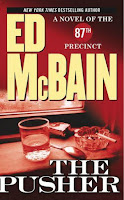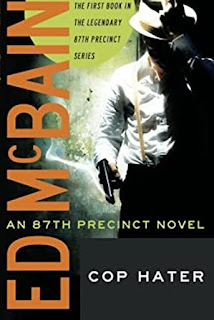Dear Mad'm Decides to Move to the Wilderness
Dear Mad'm is the name by which many readers know Stella Walthall Patterson who wrote a memoir with that title. She did something I'd be afraid to do. Her Arcata friends and family were ready to retire her to a rocking chair and wait on her when she turned eighty. But a doctor had told her she had "young legs." She wanted to see how far they could still take her. She preferred a life of adventure to a life of ease.
By the time she was eighty, Stella Walthall Patterson had lived a full life. Born in Stockton California on October 14, 1866, and orphaned at seven, by the age of sixteen she had graduated from Mills Seminary (later Mills College). She had published her first story in the
Oakland Tribune when she was only fourteen. Later she studied in Paris and became proficient in art and music.
Her first husband was Judge Augustus Belcher. She lived with him in San Francisco, socializing with other writers, including Jack London and Ambrose Bierce. The 1906 earthquake and the fire that followed prompted her to leave that area. She had lost everything.
Judge Belcher liked to hunt in the Trinity mountains, and he sometimes hired James Patterson, a rancher in Willow Creek, to act as his guide. Thus, he had occasion to meet Stella. In 1907, Stella surprised all her friends by marrying Jim Patterson and moving to his Hawkins Bar Ranch in Willow Creek. During the years in Willow Creek, the couple adopted two children -- Ralph and Thelma.
By the time Stella was eighty, she was separated, but not divorced, from Jim Patterson. At the time this book begins, Stella was living in San Francisco again. Not long before her eightieth birthday, while visiting with friends based in Arcata, she injured her leg. After her X-rays in the hospital, the Sister in charge told her she had "young legs."
She had lived an active and busy life. She had traveled to Europe and mingled with the cultured people of San Francisco. After marrying Patterson she was a rancher's wife, and the couple also had some contact with miners.
The day before her eightieth birthday, as she sat at her friend's house recuperating with her leg propped up, she still felt young. She didn't want to stick around, "waiting to be carried out feet first" when she could still be enjoying new adventures. She wanted freedom to do as she pleased.
She decided to go live in an old mining cabin she had bought two years earlier as part of a placer mining claim. It had no modern conveniences. She imagined that in the wilderness of the Siskiyou Mountains overlooking the Klamath river she would have solitude and the space to live as she pleased with no human interference. She decided to go for it. She packed her bags, took leave of her friends, and took a bus to Willow Creek. From there she planned to take a mail stage to her cabin. It was 1946. She had promised herself to stay there a year.
 Dear Mad'm (Women of the West)Check Price
Dear Mad'm (Women of the West)Check Price
Getting to the Wilderness Cabin
The mail stage driver Tom left Stella and all she'd brought with her at the foot of the fifty-foot trail that led UP to her cabin. Evening was rapidly falling. She was exhausted. She pondered the mound of luggage and boxes that somehow had to get up the steep trail to her cabin. She writes:
I had been feeling young and gay all day. Now I felt as old as Methuselah. There was work ahead and no one but me to do it.
She lugged her belongings up to the edge of her property. Her mind was filled with doubt. She asked herself what she was doing "sitting on a box in the Klamath National Forest far from electric lights, plumbing, inner-spring mattresses" and everything else she had in San Francisco. She contemplated how she would get her things up the trail and into the cabin. She decided to take only what she needed for the night in one load and come for the rest in the morning. Once inside she took a jar to fill outside at her water barrel. She could feel the scary darkness all around. She recalls:
The feeling of being alone on that vast mountainside, no neighbor within hailing distance, was working on my nerves. I might scream, yell, shout. None to hear. Just an echo from the bluffs cross the river to answer me.
After taking every safety precaution she could think of, including putting a chair against the door and loading it with pots and pans that would clatter if moved, she crawled into her bed and fell asleep.
Meeting the Neighbors
Life in the primitive cabin (actually a shack) did not quite offer the solitude Stella hoped for. First, she did have neighbors closer than she thought They were the "boys" she had hired to take care of her mine assessment work. She called them Dearsir and Up'nUp. You'll need to read the book to find out why. They just called her Dear Mad'm. The names stuck.
Very early that first morning she heard a knock on the door. She was still barefooted with her hair down. The door opened and Dearsir announced he and his partner had brought her luggage up to the cabin. She learned they had moved about half a mile up the mountain to Bent Pine Cabin. She offered them coffee and then realized that wasn't enough. She didn't have much, but she fed them bread, butter, and all her strawberry jam with it. She did manage to grab one slice herself. The men invited her to come along with them to shop at the grocery in Happy Camp in a couple of days.
Another neighbor was the eccentric Frenchy. He roamed the trails with a book in one hand an a bulb of garlic in the other. He always offered a helping hand when needed.
One day sixteen-year-old Milly came to call from across the river. She wanted to be very proper, but she was very lonely. Once Stella discovered her stilted Victorian speech came from Emily Post, she encouraged her to just be herself. They became great friends.
Occasionally Up'nUp's wife Nora, who lived in Yreka, came to visit and stayed with her.
Later Stella would meet the men's chickens, goats, and English shepherd dog Vicki. She would also meet their mule Pete "the friendliest mule" DearSir ever met. That had not been Stella's first impression.
But Stella's most dangerous neighbors were her wild ones -- a cougar and a rattlesnake. By the time she met them "the boys" had given her their dog Vicki to be her companion and protector. She turned out to be both.
Peace and Adventure
 |
| Photo by Miguel Vieira, Flickr, modified. CC 2.0 |
One of Stella's first projects was to plant a flower garden. She didn't think she'd be successful with vegetables, but she had always wanted a flower garden. In fact, when she had shopped for her trip she had bought more seeds and bulbs than food. Although the gardening work was difficult, it motivated her, as it does every gardener, to envision the blooming color her labor would bring forth in a few weeks or months.
At the end of the first full day in the cabin she had her first adventure. She came face to face with an escaped billy goat at her door. But the "boys," to whom the goats belonged, quickly caught up with them, took them away, and promised to bring her goat milk in the morning. She didn't like goat milk. Of course, she'd never tried it.
She then puzzled over a way to deal with the rats who lived just between her ceiling and her roof. Her method met with less than success until Frenchy came up with an answer a bit later.
It wasn't long before Stella finally met Pete. Their relationship got off to a rather bad start. It's quite a humorous scene, but you'll have to read it to fully appreciate it. For now we'll just say that first encounter almost made enemies of them forever. That animosity didn't help much when she later had to help trim his hooves.
One day the "boys" came by in the morning to tell Dear Mad'm they were leaving on a trip to Arcada and leaving Vicki with her for protection and company. Vicki was a permanent gift even though the men would return in a few days. She turned out to be a very valuable gift.
That night there was a terrible thunderstorm. Both Stella and Vicki were frightened to death of the storm that might fell the tree above the cabin. Vicki hid under the bed. Somehow, though, they got through the storm without damage and no trees crashed down on them.
Dear Mad'm had another adventure when the men took her to see her claim. It was up a very steep trail -- too steep for her to climb -- so they dangled her on a rope between them. They let her walk back down with an occasional lift where needed.
She did have a few quiet days of birdwatching and relaxing, but one day while she was in her garden with her nose to the ground she heard heard the whirring sound of a rattlesnake. Vicki sounded an alarm, and I'll let you read the book to see how it ended. Their encounter with the cougar that had been raiding the men's goats was also very tense. The men couldn't believe how she'd solved that problem.
But something even topped that. A storm came up when the group of friends were on the way back from Happy Camp one night. It sent rocks crashing down on the narrow mountain road as Dearsir drove the jalopy around the curves. You'll be on the edge of your seat reading that chapter.
Not long after that night Up'nUp's very pregnant wife Nora came to visit two weeks before her due date and stayed a bit too long. Never a dull moment!
You can purchase Dear Mad'm here.
Never Too Old to Be Needed
As you can see, Stella's expected year of solitude didn't go quite as planned. But she certainly did have adventures on those "young legs" of hers. Near the end of the year in her cabin she had committed herself to, there were many changes in their mountain "neighborhood." Stella had just about decided those changes would make her continued presence unnecessary because no one would need her there anymore. But another big event persuaded her to stay several more years. The book explains what happened to change her mind.
Dear Mad'm moved to a travel trailer in Redding, California, in autumn, 1955, near Thelma, and died on December 23, at the age of 89. She is buried in Redding. She died just before her book was published, so she never got to see it. Stella Patterson's writing sparkles. Her book is also sprinkled with delightful and comical line drawings by Alice Harvey, who was an illustrator and cartoonist for the
New Yorker.
In the years since her death
Dear Mad'm has had so many fans wanting to know what happened to her after her book ended that one of her relatives wrote a sequel to try to answer the questions. That book is
Dear Mad'm: Who Was She? I'm hoping to read it soon. I just discovered it.
If you are interested in active aging, nature, animals, wilderness living, placer mining, or neighbors bonding and helping each other like family, don't miss this book. It will make you laugh and it will give you moments of heart-stopping suspense. It will show you you're never too old to have adventures when you're young at heart.
The biographical information that was not in the book came from these sources:
Related Book Reviews You May Enjoy
- Could You Survive Emigrating to An Untamed Land? A Book Review : This historical Christian novel follows two Norwegian brothers who emigrated from Norway to America with their wives and children in 1880. They wanted to homestead in the Dakota territory
- Driving Miss Norma Book Review: When faced with months of draining medical procedures for treatment of what is expected to be terminal uterine cancer, Miss Norma chooses not to undergo surgery, radiation, and chemo. She decides to live out her life outside the confines of a hospital and accepts an invitation from her son Tim and his wife to take to the road with them in their RV. It is this coming together that will completely transform all of their lives.
Note: The author may receive a commission from purchases made using links found in this article. “As an Amazon Associate, Ebay (EPN), Esty (Awin), and/or Zazzle Affiliate, I (we) earn from qualifying purchases.”
 Obviously, one of the strong themes in this book is that of birth order. The New York Times says the book seems drawn from a Sociology of the Family textbook, which made me smile because yes, I thought that when I was reading the book. It does include some of the stereotypes of birth order. Other themes include coming of age, boomerang children, family conflict and love.
Obviously, one of the strong themes in this book is that of birth order. The New York Times says the book seems drawn from a Sociology of the Family textbook, which made me smile because yes, I thought that when I was reading the book. It does include some of the stereotypes of birth order. Other themes include coming of age, boomerang children, family conflict and love. 






















































